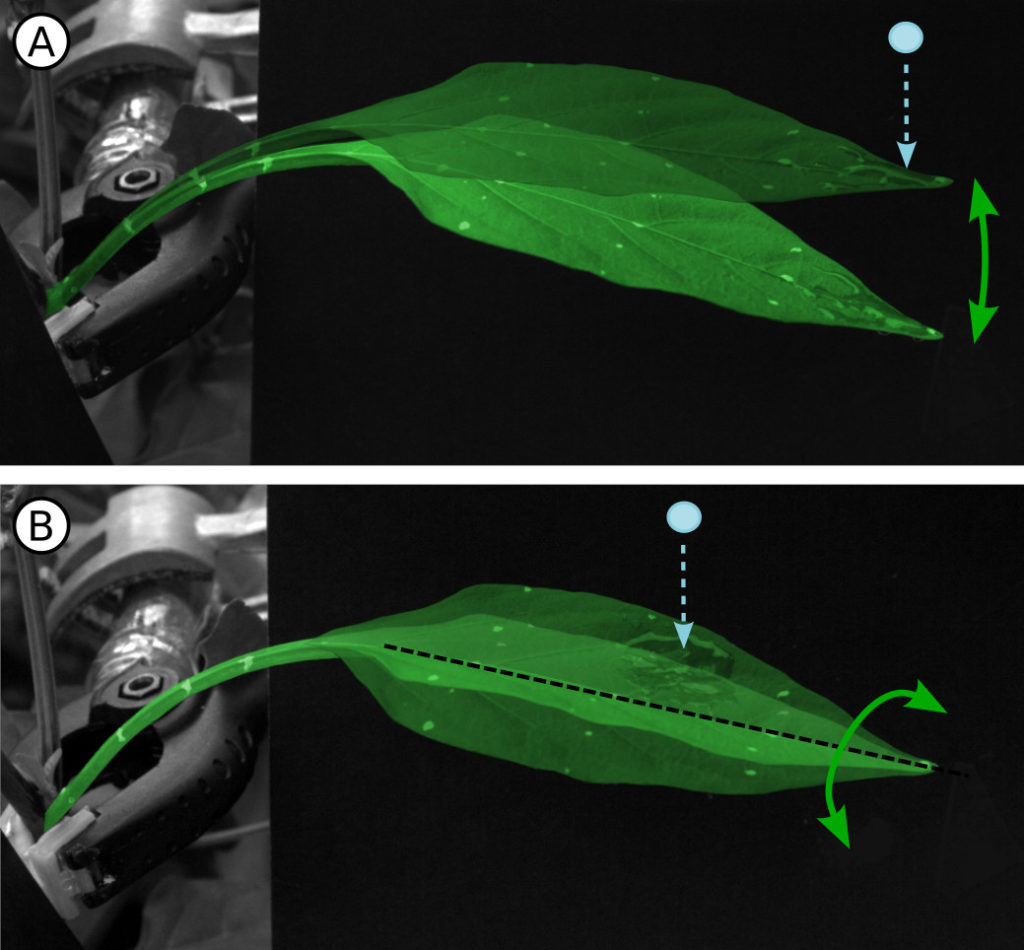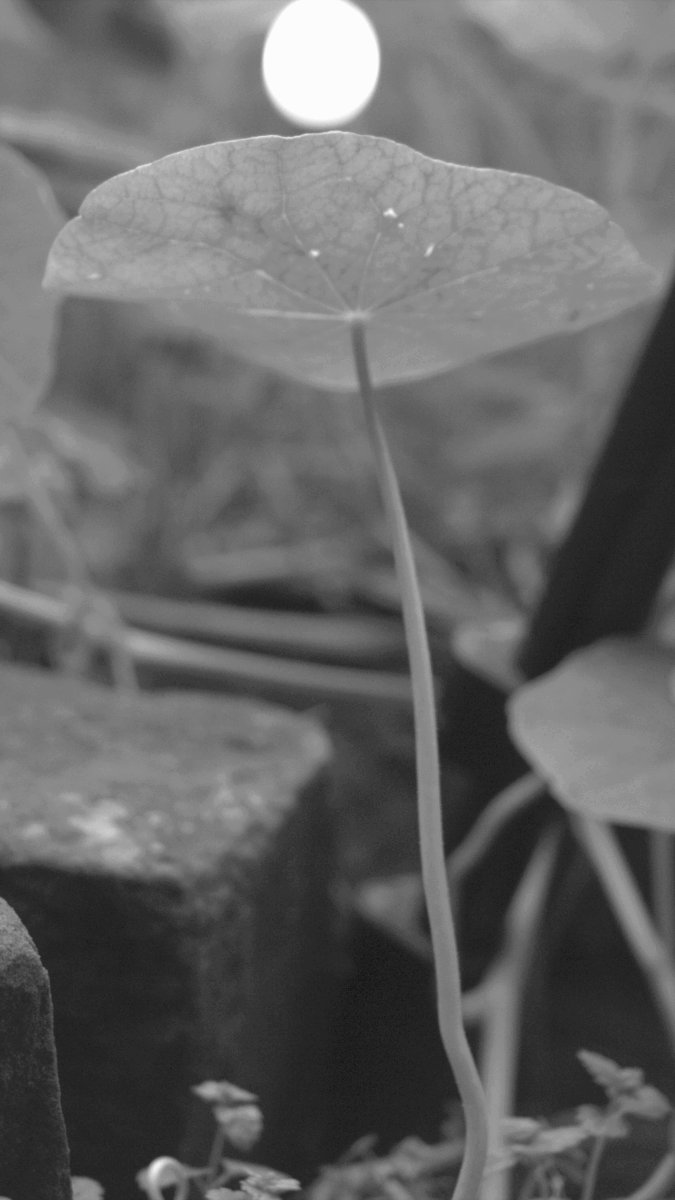PhD project: Anne-Kristin Lenz
MScR project: Nathanael Tan
Erasmus exchange projects: Janine Drube & Veronica Weis
One effect of climate change is an increased frequency of extreme weather events. Hail, wind and heavy rain can cause considerable damage to plants, with devastating effects on agriculture, horticulture and forestry. However, not all plants (and growth stages) are affected equally. Over the past years, several members in our lab have taken on the challenging task to try to understand what happens when a leaf is hit by a falling rain drop or hail stone.
Anne spent part of her PhD investigating how falling rain drops interact with leaves. To this end, she designed a portable setup that allowed her to synchronously trigger two highspeed video cameras and capture super-slow motion footage of rain drops hitting leaves.
 Using highspeed videography and 3D motion tracking to characterise the impact response of leaves in situ, in the Bristol Botanic Garden.
Using highspeed videography and 3D motion tracking to characterise the impact response of leaves in situ, in the Bristol Botanic Garden.
Anne used this setup to study how size, shape, stiffness and surface properties influence the way leaves respond to an impacting drop. She also looked at what happens to the drop – does it rebound, splash, run off or stick to the leaf? Despite the huge taxonomic and morphological diversity of the studied leaves – covering 50 species across the angiosperm phylogeny – Anne found that the impact response of most leaves followed simple rules and showed surprisingly similar patterns of bending and twisting.

Leaves across a wide range of shapes and sizes show a stereotypical impact response of bending (A) and twisting (B). The twist-to-bend ratio is partly dependent on the drop impact location, while the frequencies of bending and twisting strongly dependent on the leaf shape.
Nat and Janine modified Anne’s setup to investigate hail impacts on plants. As real hail is difficult to predict, they designed a ‘hail simulator’ – basically a glorified gun for shooting large plastic balls at plants. Understanding the biomechanical underpinnings of hail resistance in plants will not only help to inform crop breeders of traits to select for in order to produce more resilient crop plants, but also provide inspiration for architects and engineers aiming to construct buildings that are better equipped to withstand hailstorms and other extreme weather events. This research is still in the very beginning, but we have already seen some pretty amazing damage-avoidance strategies!
 The delicate leaves of Nasturtium plants show an ingenious deflection behaviour when struck by a solid impact.
The delicate leaves of Nasturtium plants show an ingenious deflection behaviour when struck by a solid impact.